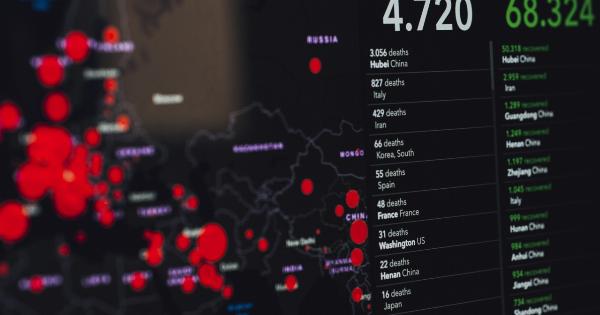Over the past decade, a global effort has significantly reduced the impact of HIV/AIDS on populations worldwide.
Although advancements in treatment and prevention have been made, recent developments in Europe have raised concerns within the medical community. A new, highly virulent strain of AIDS has emerged, posing a substantial threat to public health.
This article aims to explore the emergence and implications of this new strain, as well as potential strategies for containment and future research initiatives.
The Origin and Spread of the New Strain
Scientists have identified the new strain of AIDS as HIV-1 Group M, subtype L, a variant that has been circulating in the Democratic Republic of the Congo since the early 1980s.
It is believed to have spread to Europe through increased global connectivity and movement of people. The subtype L has rapidly garnered attention due to its potential to counteract antiretroviral drugs effectively, creating challenges for both treatment and prevention efforts.
Characteristics and Implications
One of the primary concerns surrounding this new strain is its potential for rapid transmission.
Studies have shown that the subtype L variant exhibits enhanced infectivity and can efficiently fuse with host cells, leading to more substantial viral loads. Additionally, this strain has shown resistance to some of the existing antiretroviral drugs that have been highly effective in managing HIV infection.
This emergence raises several implications for public health. Firstly, the increased transmissibility could facilitate a surge in new HIV infections, potentially reversing the progress made over the past decade.
Secondly, the resistance to antiretroviral drugs threatens the treatment regimens of individuals living with HIV/AIDS, who may experience treatment failure and a resurgence of symptoms. Lastly, the strain’s potential to develop further drug resistance highlights the need for accelerated research and development of novel treatment options.
Challenges in Detection and Diagnosis
The identification and diagnosis of this new strain pose significant challenges. Traditional diagnostic tests may fail to detect HIV-1 Group M, subtype L correctly.
Consequently, individuals infected with this strain could go undiagnosed for extended periods, contributing to the spread of the virus. The scientific community must develop new diagnostic tools capable of accurately identifying this variant to enact effective surveillance and intervention strategies.
Containment and Prevention Strategies
Given the potential ramifications of this new strain, it is crucial to develop robust containment and prevention strategies.
Enhanced surveillance efforts must be employed to monitor the spread of the variant and identify potential clusters of infection. Additionally, public health authorities should focus on promoting safe sexual practices, increased testing, and education to raise awareness about the new strain’s risks and prevention methods.
Furthermore, healthcare providers must adopt a proactive approach in testing and diagnosing patients presenting with symptoms of HIV/AIDS, ensuring the accurate detection of this new strain.
Collaborative efforts between research institutions, governmental bodies, and healthcare organizations will be vital in effectively managing the emergence of this virulent strain.
The Need for Research and Development
As the threat posed by this new strain becomes apparent, it is imperative to prioritize research and development efforts.
Scientists and pharmaceutical companies must work together to develop effective antiretroviral drugs that can combat the subtype L variant. Moreover, exploring alternative treatment options, such as gene therapies or immunotherapies, could offer hope for individuals who have developed drug resistance.
Additionally, efforts should be directed towards understanding the immunological and virological characteristics of the subtype L variant to inform the development of targeted prevention and treatment strategies.
Research initiatives must receive adequate funding and support to expedite progress and mitigate the potentially devastating consequences of this emergent strain.
The Global Impact and Collaboration
The emergence of a new, virulent strain of AIDS in Europe necessitates global collaboration and solidarity. As the world continues to combat the ongoing HIV/AIDS pandemic, it is essential to address this new threat collectively.
Governments, international organizations, and stakeholders should unite efforts to share knowledge, resources, and best practices in monitoring, prevention, and treatment.
By leveraging global expertise and resources, it is possible to develop comprehensive action plans that prioritize early detection, swift intervention, and ongoing research.
Such collaboration will not only benefit those directly affected by the new strain but also contribute to strengthening healthcare systems and preparedness for potential future outbreaks.
In Conclusion
The emergence of a new, virulent strain of AIDS in Europe demands immediate attention and action. The subtype L variant of HIV-1 Group M poses unique challenges due to its enhanced transmissibility and resistance to existing antiretroviral drugs.
Detected cases should be closely monitored, prevention strategies must be implemented, and research efforts should be intensified to develop effective treatments and diagnostic techniques.
By prioritizing containment, prevention, and research, we can hope to minimize the impact of this new strain and continue on the path towards eradicating the HIV/AIDS pandemic once and for all.






























